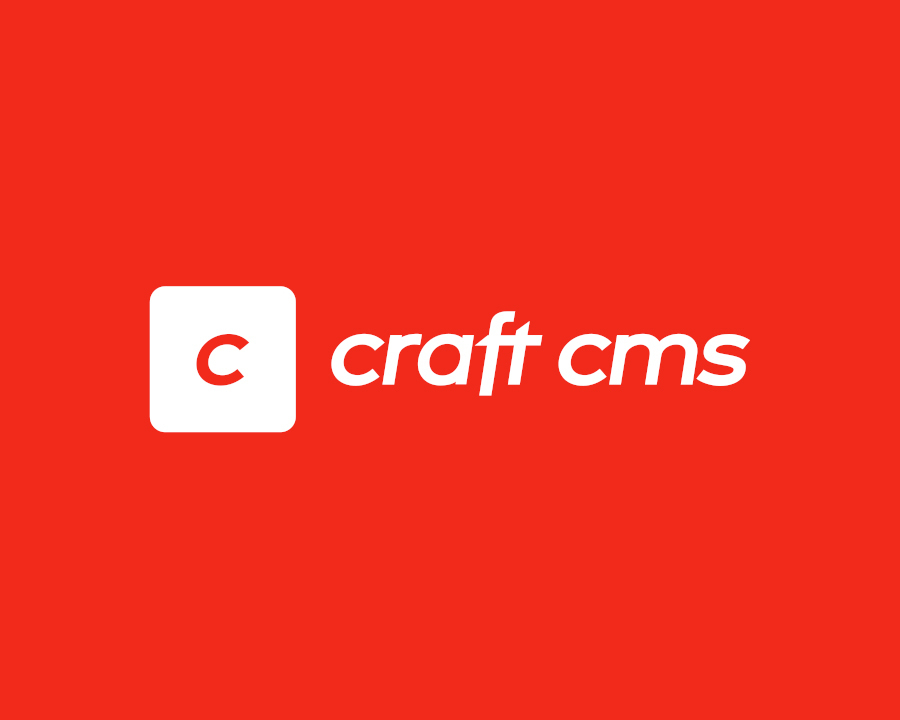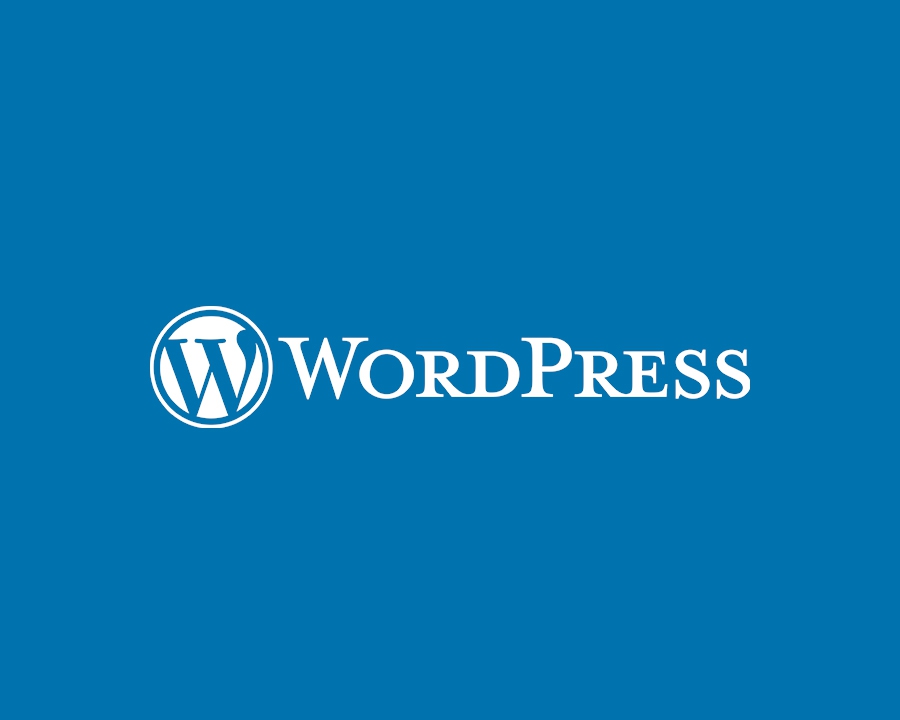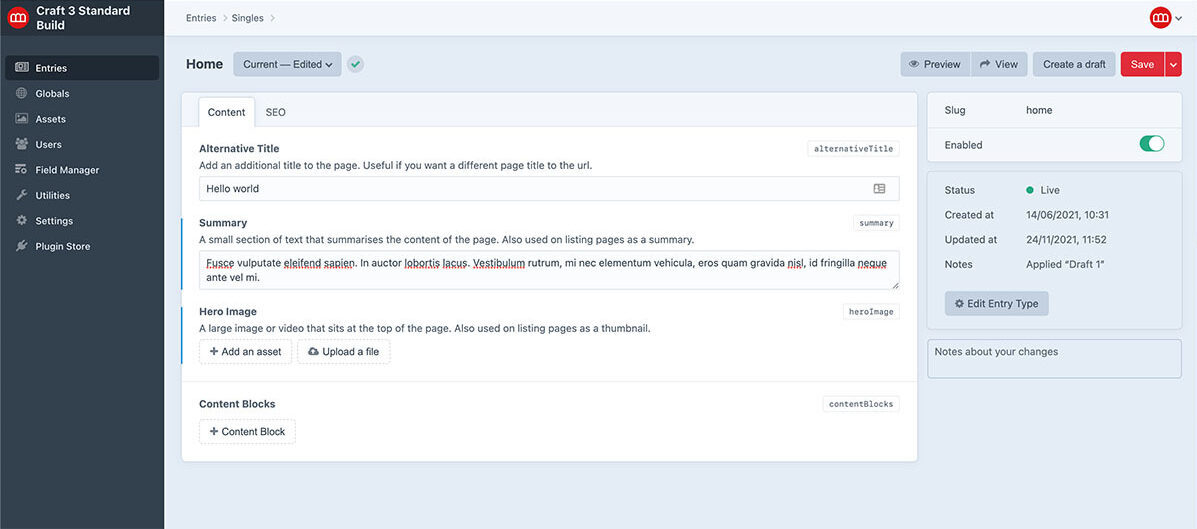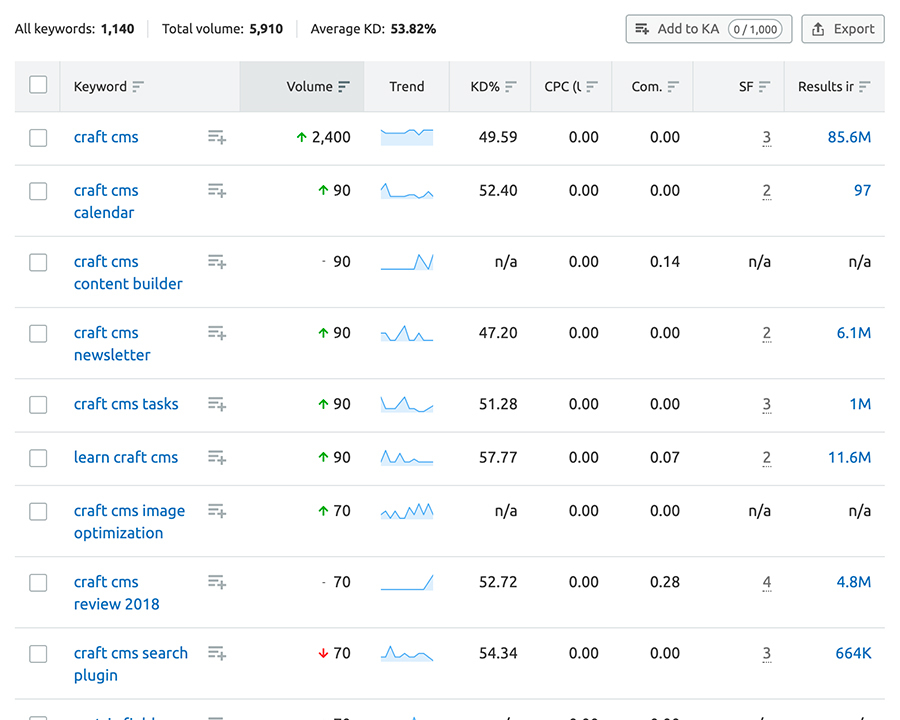Craft CMS vs WordPress: A comparison & why we love Craft CMS
Posted 17 Nov 2024 •
We’re big fans of Craft CMS and it is usually our number one choice for any content managed website. We love it and so do our clients - the control panel is focused, intuitive and user-friendly and people hit the ground running with it straight away.
But, we are often asked, “why would you recommend Craft CMS over WordPress?”
We are proud to say we are a Craft Partner agency and you can view our profile here.
This means we have proven experience with Craft (that has been verified and approved by the makers of Craft CMS) and have a professional dedicated Craft development team. Working with a Craft Partner agency gives you peace of mind that you're working with a team that know and understand Craft CMS and take your business seriously.
Why Craft CMS over WordPress?
WordPress is so ubiquitous it’s not unusual for people with very little knowledge or experience to ask for it by name because they have heard of it and/or used it before.
The opposite is generally true for Craft. It’s more specialist and usually, it’s web industry professionals who know it by name. This is beginning to change though as Craft CMS gathers more and more supporters.
Craft CMS
Craft CMS was built from the ground up to be a Content Management System. It was built to be as flexible as possible for developers and end-users.
With Craft there are no pre-built themes and it is entirely customisable. On one hand, this means you have more work setting everything up, but on the other, it means your website only has the code it really needs. This reduces bloat and makes your website perform better.
Craft CMS is one of the fastest-growing CMS platforms with many high profile users including, Netflix, Intel, Sonos, Salesforce, Moz, Reddit, Oakley and the Dalai Lama!

WordPress
WordPress has evolved from being blogging a platform with CMS capabilities. The CMS elements have expanded over the years but were not part of the core platform and a lot of functionality is available via plugins.
WordPress is theme-based and although a theme can be set up relatively easily without having to code it from scratch, it does mean that there is going to be a lot of unnecessary code that will slow a website down. You can, of course, build your own theme from scratch but this is more costly and if you’re wanting to go down that road we would recommend Craft CMS for the reasons outlined below.
WordPress is without question the more popular platform and powers something like 40% of the internet. But there is a reason for this - it is cheap (WordPress itself is free but decent plugins come at a cost), and more accessible to those with lower budgets and technical capabilities.


Ford Fiesta or a Mercedes?
An analogy we would use is that the top-selling cars in the UK in 2020 were the Ford Fiesta and Vauxhall Corsa. These are perfectly good cars but many people would regard models by Audi, BMW or Mercedes as being higher quality (for various reasons, not just image and prestige), and would opt for one of these brands if they could.
Of course, some people would say, it’s unimportant and they just need a car to get them from a to b. That’s fine too and why we always take the time to understand individual requirements.
Content management
The clue is in the name but something a content management system should excel at is content management. Craft CMS is best in class for this and makes life easy for content editors.
A key part of this is Craft’s control panel interface, which is clean and simple. Anyone who has used WordPress will be familiar with the cluttered sidebars, especially with sites that have several plugins. Craft keeps things organised, minimal and elegant, allowing you to focus on the job in hand.
Trying to see how your changes look on the live site can be a pain and in WordPress you can end up with multiple tabs open in your browser. This leads to confusion about which tab is the current live version and you can end up making mistakes and losing work. Craft has the fantastic Live Preview feature so you can see how your content will look before it goes live and even share your work with others using private preview URLs.
Craft also allows you to save as draft rather than publish straight away and of course, you can schedule content to be made public automatically in the future (or be removed automatically). This is fairly standard stuff but Craft takes things to another level by offering version control so you can see who changed what and when. Multiple authors can also work on pages and drafts can be merged into each other, ensuring you don’t overwrite another author’s work.

Security
Security is a key concern for any website but especially for a business where image and credibility are important. A hacked website makes a business look bad but compromised data raises even deeper worries.
There’s is no doubt that WordPress core is well-tested and secure, but there are some important advantages Craft has over it:
- With Craft CMS you will normally have less reliance on plugins than you would with WordPress. Most WordPress hacks are due to vulnerabilities introduced by third-party plugins and most WordPress sites use several of these (many in some cases).
- The low hanging fruit for hackers is WordPress because it’s so ubiquitous. In comparison, Craft is less common and this means it’s a much smaller target for hackers.
- Craft uses the modern Yii 2 framework. This makes it easier for Craft CMS themselves and plugin developers to write secure code.
Performance
There is no doubt that WordPress core is fast. The problem is, once you add a theme and various plugins things can change and the system down slows drastically. The popularity of WordPress means there is a wealth of third-party themes and plugins out there but the quality of these can be questionable.
A typical Craft site (even with a few plugins installed) is generally much faster than a similar WordPress site.

One of the attractions of WordPress is you don’t necessarily need to be able to code yourself and can use themes and plugins to get quick results. A drawback to this is that by their nature these themes and plugins are designed to be very flexible and useful to as many websites as possible. This means that there is likely to be a lot of code being used that you don’t actually need. This creates bloat, bogs your website down and ultimately affects performance.
WordPress themes often try to be a one size fits all solution, when really your website should be tailored to you, your business and your customers. Also, it can also be hard for your website to stand out when using a WordPress theme whereas Craft sites are built from the ground up every time and with that, the website has a unique feel.
SEO
So much goes into SEO and the CMS platform used is only once part of a complex picture. There is no doubt that the CMS is very important though, especially when it comes to technical SEO and page load speeds.
As discussed above, Craft CMS offers excellent performance and this is a key ranking factor for search engines (Google has indicated site speed is one of the signals used by its algorithm to rank pages). When it comes to on-site and technical SEO your CMS should make things easy and put you in full control of the important things you need to consider and optimise.
When it comes to WordPress, Yoast is usually the go-to plugin to assist you with your SEO needs. Yoast is very good at managing on-site and technical SEO needs, including managing page titles and meta descriptions and meta descriptions, XML sitemaps, canonical URLs and also analysing your content to identify keyword optimisation opportunities.
Yoast has a deservedly great reputation but fortunately Craft CMS has an even more powerful solution in SEOmatic. SEOmatic facilitates modern SEO best practices and is a turnkey SEO system that is comprehensive, powerful, and flexible.
One of the most respected authorities on SEO moz.com actually use SEOmatic to manage their own SEO, which is something that speaks volumes!

Accessibility
The bastions of standards and accessibility online is The World Wide Web Consortium (W3C). A respected international community, they are the main international standards organisation for the World Wide Web.
When developing their own new website they shortlisted Craft CMS, WordPress and Statamic as possible options.
The conclusion was it was a close race between Craft CMS and Statamic but WordPress was excluded, partly because of accessibility issues of its new Gutenberg editor. They also didn’t want to be left relying on the WordPress Classic Editor which there is a real risk will be unmaintained in the near future.
Craft CMS was eventually chosen as they went the extra mile by committing to a roadmap and hiring an in-house accessibility expert to report accessibility issues and educate the development team.
You can read the full report on their decision to select Craft CMS here.
In summary
As you can probably tell, we are Craft CMS evangelists and could sing its praises all day.
We hope that you have found this blog post useful and would love to talk to you if you have any further questions or have a project you would like to discuss.
Next Article: Crafting Excellence: A Comparative Analysis of Craft CMS & Drupal
Selecting the right content management system (CMS) is a crucial decision for any website development project. We compare two leading contenders, Craft CMS & Drupal.
Read moreReady to talk to us?
If you have a project you'd like to discuss we would love to hear from you.